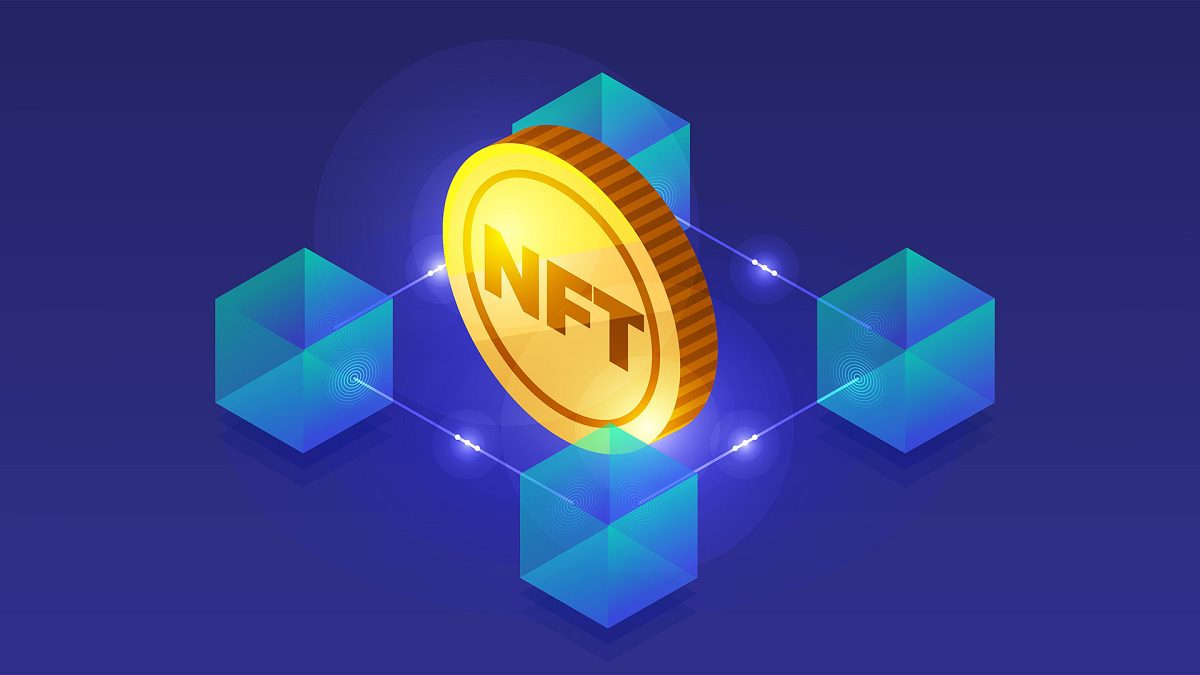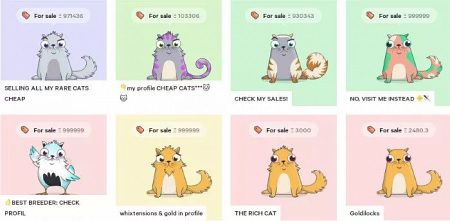Why are NFTs valuable Understanding Key Factors and Dynamics

Blockchain technology has come to change many paradigms of ordinary life. At first, blockchain was only about Bitcoin (BTC), then it moved on to the self-executing smart contracts of the Ethereum network, and now it has reached the art market, with non-fungible tokens (NFTs).
On March 11 of this year, a digital artwork entitled “Everydays: The First 5000 Days” by digital artist Beeple was auctioned for $69.3 million. In addition to the record for the most expensive NFT ever auctioned, the work became the third most expensive by any living artist.

“Everydays: The First 5000 Days” by Beeple
Unlike other digital works, which are auctioned on the internet on platforms such as OpenSea, SuperRare and Nifty Gateway, this NFT was auctioned at Christie’s, a traditional British auction house, being the first digital work to be auctioned there.
NFTs are alternative investments that transform digital and collectible items into easily tradable assets on the blockchain.
Because they carry value, they can also be used in the decentralized finance market (DeFi).
If you are a traditional investor, you may be looking at NFTs and wondering who would be willing to buy an asset that is similar to a cryptocurrency but does not produce cash flow?
That’s what we’re going to answer throughout this article.
Read on and understand what NFTs are and why they are seen as an important product for the future of the art and collectibles market and even as an investment.
What are NFTs?
To understand what NFTs are, we first need to understand the concept of fungible. Fungible is anything that you can replace with the same unit of this asset. For example, a $100 bill, regardless of the year it was issued, if it is still valid is worth $100, and you can exchange one bill for another. This is a fungible asset, meaning that they have the same value.
This, in the digital universe, takes on a special characteristic. The vast majority of NFTs are issued on the Ethereum network, which is a blockchain where you can issue tokens using the network’s smart contracts.
NFT stands for non-fungible token, and is a kind of digital authenticity seal that uses the same blockchain technology that underpins cryptocurrencies like Bitcoin (BTC).
The vast majority of NFTs are issued on the Ethereum network, although other blockchains can also run versions of NFTs. Unlike most cryptocurrencies, such as bitcoin, which are fungible, meaning they can be replaced with others of equivalent value, tokens on these blockchains are not fungible. This means that they are unique. So one NFT is not the same as another, either in value or in the properties of the token itself.
In short, NFT is a type of tamper-proof digital property certificate that guarantees ownership of something in the virtual world or otherwise, in a way that no one can copy. Also, know more about best decentralized crypto exchange.
How NFTs work
NFTs are tokens that represent digital items such as digital art or any physical art such as an original painting for example. When you purchase an NFT, you acquire record ownership of the asset, that is, you become the original owner of the NFTs work.
Ownership of the NFT tells other people that you own something and no one else can claim it. Unlike deeds and bonds, NFTs can represent virtually anything. As long as it is a unique item about which you can make a legitimate claim. At the moment, they are mainly digital artwork or trading cards.
You can either create an NFT for a particular item and make money selling it, or you can buy an NFT by betting on its valuation.
NFTs are built on the same kind of infrastructure as cryptocurrencies. They use blockchain to record the transfer with a unique digital signature. Thus, it becomes impossible (or at least very difficult) to counterfeit an NFT.
What is blockchain technology?
Blockchain technology is nothing more than a public ledger (or accounting ledger) that makes a record of a digital currency transaction [the most popular of which is Bitcoin (BTC)], so that this record is reliable and immutable.
In other words, the blockchain records information such as: the amount of bitcoins (or other currencies) transacted, who sent it, who received it, when this transaction was made, and where in the book it is recorded. This shows that transparency is one of the blockchain’s strengths.
When did NFTs come into existence?
Some cryptocurrency enthusiasts trace the origin of NFTs to “colored coins” in 2012. Colored coins were literally bitcoins that were “colored” to give them special attributes and properties to distinguish them from the rest of the bitcoins and had value independent of the face value of the underlying Bitcoin (BTC).
From there they evolved into the CryptoPunks released in 2017, which were digital images of 10,000 human and animal characters, and the CryptoKitties, a virtual kitten game.
The most valuable CryptoKitties now sell for over $100,000. CryptoPunks, meanwhile, have resurfaced after #2890 sold online for 605 ETH in January 2021. Another punk, #4156, sold for 650 ETH, the equivalent of $1.24 million.

CryptoKitties

CryptoPunks by Larva Labs
Another NFT hit, is “Nyan Cat,” a video posted on YouTube in April 2011, and eventually became an Internet meme. The video united the Japanese pop song Nyanyan! with a cartoon of a gray cat done in pixel art flying in space on a loop. The video is ranked among the top five most viewed YouTube videos of 2011, and the meme was auctioned off as an NFT in February of this year for 300.00 ETH equivalent to $593,490.00.

Nyan Cat
What is the point of NFTs?
NFTs can represent a series of properties, mainly unique and digital items, such as digital art, collectible cards and in-game items.
NFTs are being used as a means to sell unique items with verification potential. Anything that has value and that can be proven to be owned can be turned into a token, such as a work of art, music, image, website domains, and collectible digital assets.
When you issue a non-fungible token, you are creating a unique token, and then you can link into that token something that you want to keep unique and exclusive. This can be any digital file, a work of art, game assets, or even the record of something in the real world, such as a rare bottle of wine, all recorded on the blockchain.
When you invest in an NFT, you receive a token with a digital hash that tells the world that you own a specific asset. This feature allows NFTs to act as a proof of authenticity and can be used to create digital scarcity.
It is worth noting that many different types of art and collectibles can be tokenized. From digital illustrations, to videos and GIFs, to even Pokémon cards.
Most assets are virtual, meaning they exist only in the marketplace that sells them.
A minority of NFTs are digital records of ownership of a real physical object, such as real estate or limited, unique items, for example.
Even tweets can be sold as NFTs, as Twitter co-founder Jack Dorsey did by auctioning off his first tweet in March 2021 for $2.9 million. The money raised was converted into Bitcoin and donated to charities.
However, there are some limits. Easily replaceable items like dollars or Bitcoin, for example, cannot become NFTs.
Are NFTs important?
Non-fungible tokens (NFTs) are allowing people to buy and sell unprecedented digital assets. While cryptocurrencies can be used alternatively, NFTs have unique identification codes stored on a blockchain that differentiates each one. You can buy digital artwork, music, image, and even digital esports cards in NFTs.
For the artist, an NFT token creates a new source of revenue and output for their art or music. For the collector or investor, it is a new opportunity to buy or invest in a new asset class.
Advantages of NFTs for sellers
For a seller, NFTs make it possible to earn from something unique or of his creation. This makes it interesting, in particular, for artists.
It represents the return of power and control to the hands of the creator who can choose to sell on a one-time basis or create a recurring revenue stream.
In the latter case, the NFT is simply codified so that the original creator earns money each time the token is traded, usually for 5% to 10% of the selling price.
With this, the adoption of NFTs could change the fortunes of the music industry. There is also great potential for the use of NFTs in gaming, where they can form the basis of economies.
Players can use NFTs to claim ownership of rare or hard-to-earn items, as rewards for taking on challenges or participating in special events, to convert points into coins for real-world transfer, and so on.
Content creators, on the other hand, can use NFTs to monetize their work directly.
Advantages of NFTs for the buyer
For a buyer, the NFT provides a secure certificate of ownership over a digital object, protecting the value of the asset.
Those who buy an NFT are usually driven by scarcity, and may have the status of being the sole owner of a particular work. They can be bought and sold at a profit on an NFT market if the value increases.
Examples of trading with NFTs
The buying and selling of NFTs gained prominence after celebrities and well-known brands used the technology in the last year.
Here are some recent NFT examples:
- In late 2019, the sportswear company Nike (NIKE34)patented an NFT project called CryptoKicks. CryptoKick tokens are used to link physical shoes to digital versions on various apps, and it is possible to trade them on digital marketplaces.
- The American band Kings of Leon, held the auction of the world’s first tokenized album. The group presented some versions of the new album “When you see yourself”, which include, in addition to the songs, lifetime tickets to concerts and exclusive artwork. So far, the band has raised about $2 million.
- The singer Grimes held an NFT art auction with ten digital artworks. In less than 20 minutes it raised about $6 million.
- In February 2021, a work by digital artist Mike Winkelmann, known as Beeple, sold for $69 million.
- Already the NBA Top Shot platform, created in partnership with the company that launched “CryptoKitties,” Dapper Labs, auctions off clips from basketball game videos, called “moments.” With these virtual figurines alone, it has raised about $500 million. A single ten-second snippet of a LeBron James play was purchased for $208,000.
- In early March, the technology company Injective Protocol burned a billboard of British artist Banksy and sold the video on NFTs for almost $400,000.
How are NFTs created?
The process of creating NFT tokens is also known as “minting,” a reference to the way fiat currencies are minted by manufacturers.
NFTs are minted through an NFT marketplace, where the artist uploads the digital file (music, image, digital art for example) and assigns properties, such as whether the work is a limited edition, has multiple copies, or is part of a collection. Most NFTs are created on the Ethereum network, however, other blockchains also have the ability to mint digital tokens.
How to buy and sell NFTs?
NFTs are traded on NFT markets, such as Nifty Gateway, OpenSea, Rarible or Binance NFT.
Sales are usually done in the form of auctions with an initial NFT price.
If your bid is the winner, you assume ownership of the NFT and can later open your own auction on the market to sell it at a profit.
Trading is done in cryptocurrencies, so if you want to buy NFT, you first need to buy digital coins, Ethereum is the most used, and later you must hold them in a digital wallet such as Metamask or Trust Wallet
Because of the risk, it is advisable to limit investing in NFTs to up to 5% of your total investment portfolio, even if you believe an asset can double or quadruple in value.
How do you know if NFTs are valuable?
Like any new asset that is in the early stages of development and adoption, NFTs also present some risks. Non-fungible tokens (NFTs) can have two audiences: those who buy because they really like the particular item and want to keep it, or those who buy to speculate.
The only way they can make money is if someone else comes along and is willing to pay more for them.
NFTs also suffer from liquidity risk. If no one wants to buy, prices will fall and the buyer can suffer big losses.
Are NFTs a good investment?
NFTs are alternative investments that turn digital and collectible items into easily tradable assets on the blockchain.
The value of a non-fungible token (NFT) is based on what someone is willing to pay for it, so it is very difficult to say whether it will be a good investment in the short, medium or long term. NFTs are now very popular with artists and celebrities like ASAP Rocky, Paris Hilton, Grimes, Mark Cuban, Snoop Dogg and Lindsay Lohan, and brands like the NBA and NIKE creating their own NFTs.
NFTs are also seen as potential assets to be used in the decentralized finance space (DeFi). In other words, decentralized finance does not rely on third parties or central financial intermediaries such as brokerages, exchanges or banks and instead uses smart contracts from the Ethereum network.
Many believe that in the future NFTs could be used as collateral for loans or as financial contracts for insurance, stock options or bonds that can be traded as products on a secondary market. They can also be used as governance tokens for NFT space.
What are some risks?
The NFT market is still very new and is expected to go through different cycles. Like any new asset class, they will also experience their ups and downs.
Because it is a highly volatile investment, it will likely have the violent price swings like different cryptocurrencies have experienced in recent years.
It is recommended that anyone who wants to invest in nonfungible tokens be careful and invest only what they can afford to lose.
The popularity of NFTs exploded in late 2020 when the price of bitcoin skyrocketed. Along with that was widespread growth throughout the digital economy.
Sales should accelerate as more artists, brands, companies and celebrities use NFTs to bypass traditional market routes and monetize their products.
It’s important to remember what NFTs are: a digital artifact certificate.
Buy them (or don’t) because you love them. If you’re going to speculate, make sure you’re focusing on your area of expertise.
Even with blockchain technology, NFTs are not exempt from fraud.
Anyone can claim to own works by well-known artists and sell them for thousands of dollars, but reveal them to be fakes.
Just as cryptocurrencies can be stolen, NFTs are also subject to theft, depending on how they are stored.
Another risk to keep in mind is that even digital content is not entirely free from losing quality, file formats becoming obsolete, platforms going offline, or even the loss of digital wallet passwords.
More about NFTs at https://weplaycollectibles.com/ – a software platform that uses blockchain technology.
